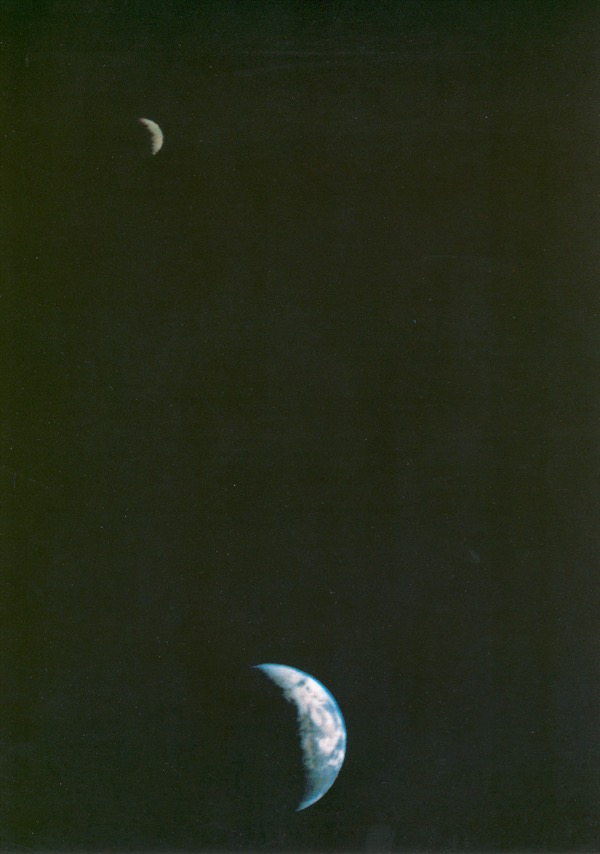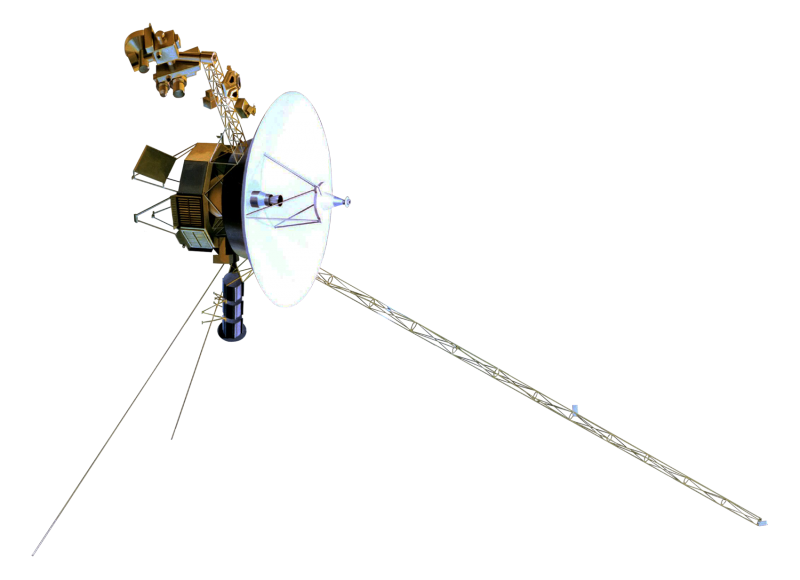
Voyager 1 on September 18, 1977 captures image of Earth and moon
Previous images had shown a part of the Earth, and a part of the moon, together. But we’d never seen the Earth and moon as whole worlds in space, in the same frame and in color. That’s until Voyager 1 took this image on today’s date 45 years ago. Can you imagine how the image affected people at the time? I can, because I remember it. It was a stunning revelation and such an incredible photo.
Voyager 1 left Earth on September 5, 1977. It lifted off from Cape Canaveral, Florida, aboard a Titan-Centaur rocket.
It was 7.25 million miles (11.66 million km) from Earth – directly above Mount Everest, on the night side of the planet – when it captured this image.
Voyager 1 and 2: The Grand Tour
Voyagers 1 and 2 were sent into the outer solar system to take advantage of a favorable arrangement of outer planets. It was to be a Grand Tour of our solar system’s gas giants. Voyager 1 made successful reconnaissance flybys of the planet Jupiter and Saturn, and Saturn’s moon Titan, in 1979 and 1980. Voyager 2 also performed flybys of Jupiter and Saturn in 1979 and 1981, as well as the very first, and so far only, visits to the planets Uranus and Neptune in 1986 and 1989.
Afterwards, both Voyagers kept moving outward, heading out of the solar system.

Timeline for Voyager 1
On February 17, 1998, Voyager 1 reached a distance of 69 astronomical units (AU) from the sun. At that point, it overtook Pioneer 10 as the most distant spacecraft from Earth.
On August 25, 2012, Voyager 1 became the first spacecraft to cross the heliopause, the boundary at which our sun’s influence ends, thus entering the space between the stars.
As of September 18, 2022, Voyager 1 has operated for 45 years and 13 days. The spacecraft still communicates with the Deep Space Network to receive routine commands and return data.
On August 24, 2022, the SETI Institute said that its Allen Telescope Array (ATA) in northern California had picked up signs of intelligence. But it wasn’t aliens. These signs came from NASA’s Voyager 1 spacecraft, the farthest human-made object from Earth. After an upgrade on the ATA, SETI tested its new capabilities, and was able to to seek and detect Voyager 1’s carrier signal.
Voyager 1’s extended mission is expected to continue until around 2025 when its radioisotope thermoelectric generators will no longer supply enough electric power to operate its scientific instruments.
Then onward through interstellar space
After the generators fade, it will then be moving silently through space, with its audio-visual Golden Record on board, whose sounds and images were selected to portray the diversity of life and culture on Earth. It’s streaking toward a distant encounter with a star called Gliese 445, which lies 17.6 light-years from Earth, and is due to sweep closest to it in about 40,000 years.

Bottom line: On September 18, 1977, as it headed toward the outer solar system, Voyager 1 looked back and acquired the first-ever image of our Earth and moon together in a single frame.











